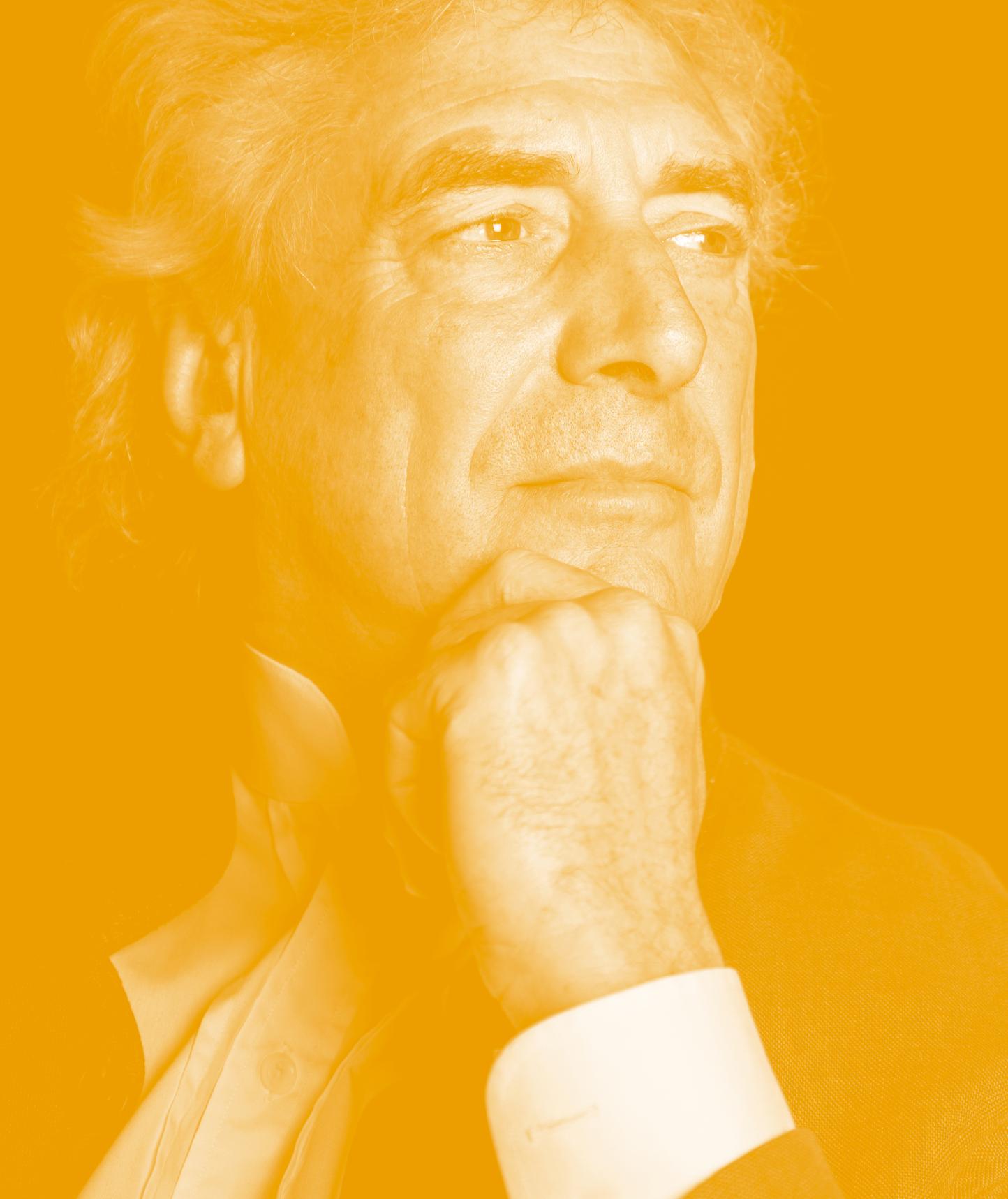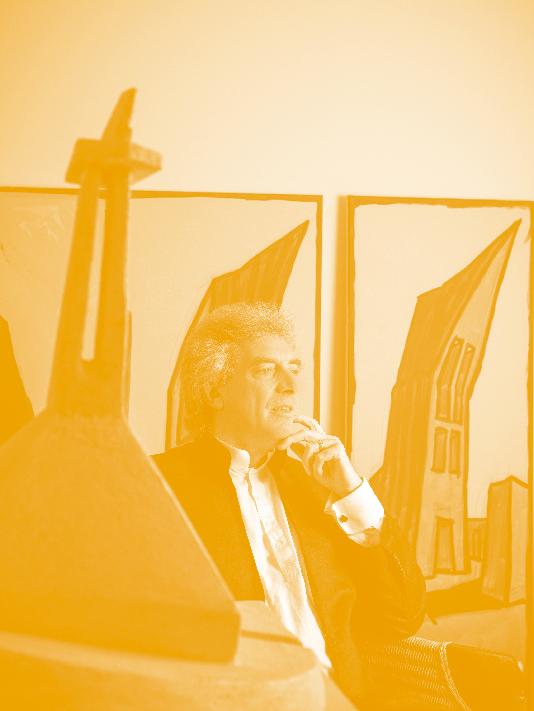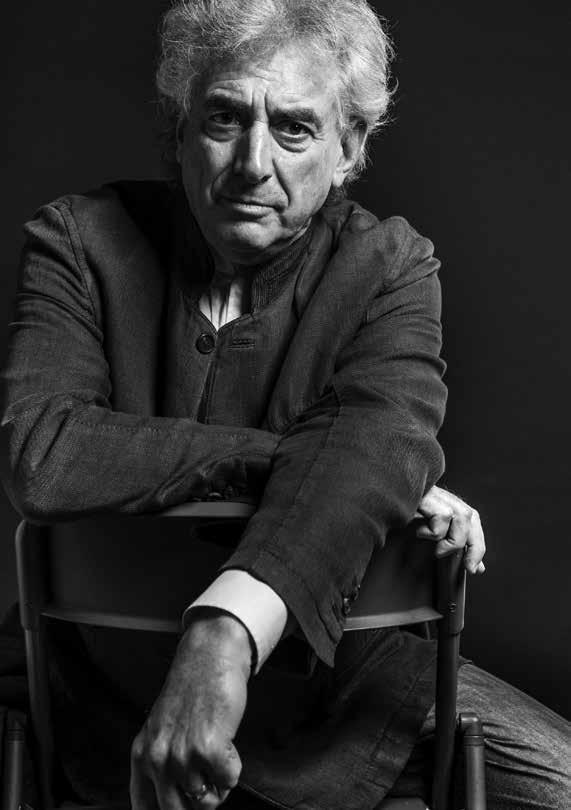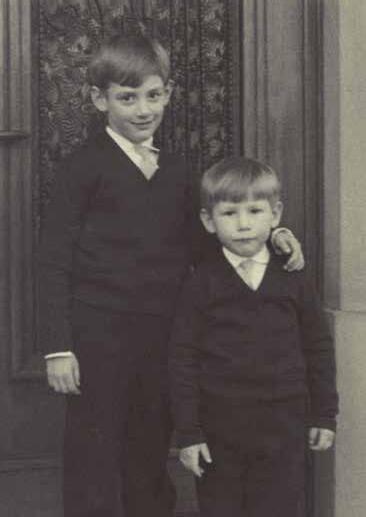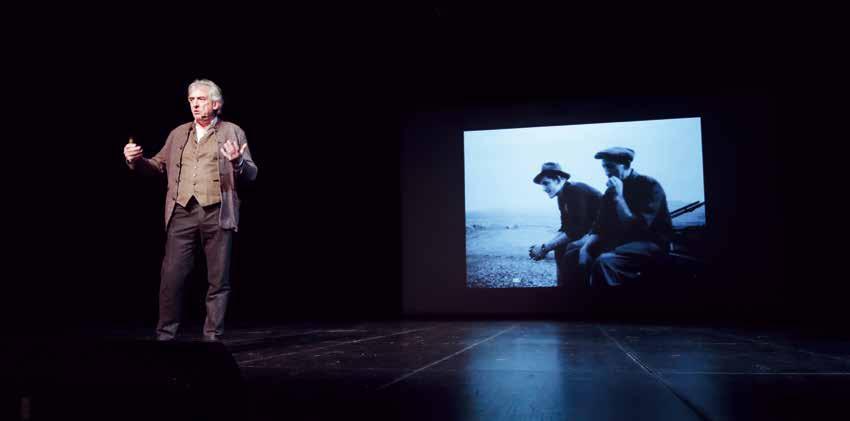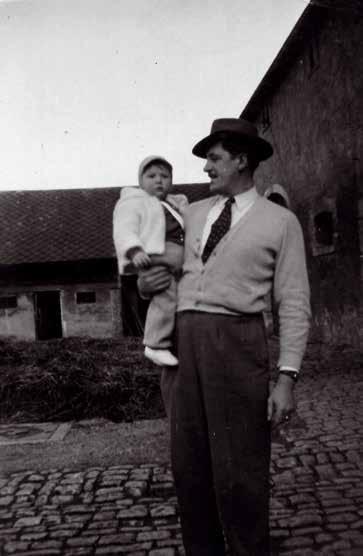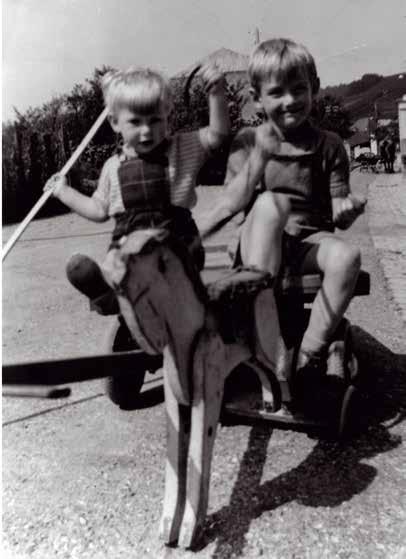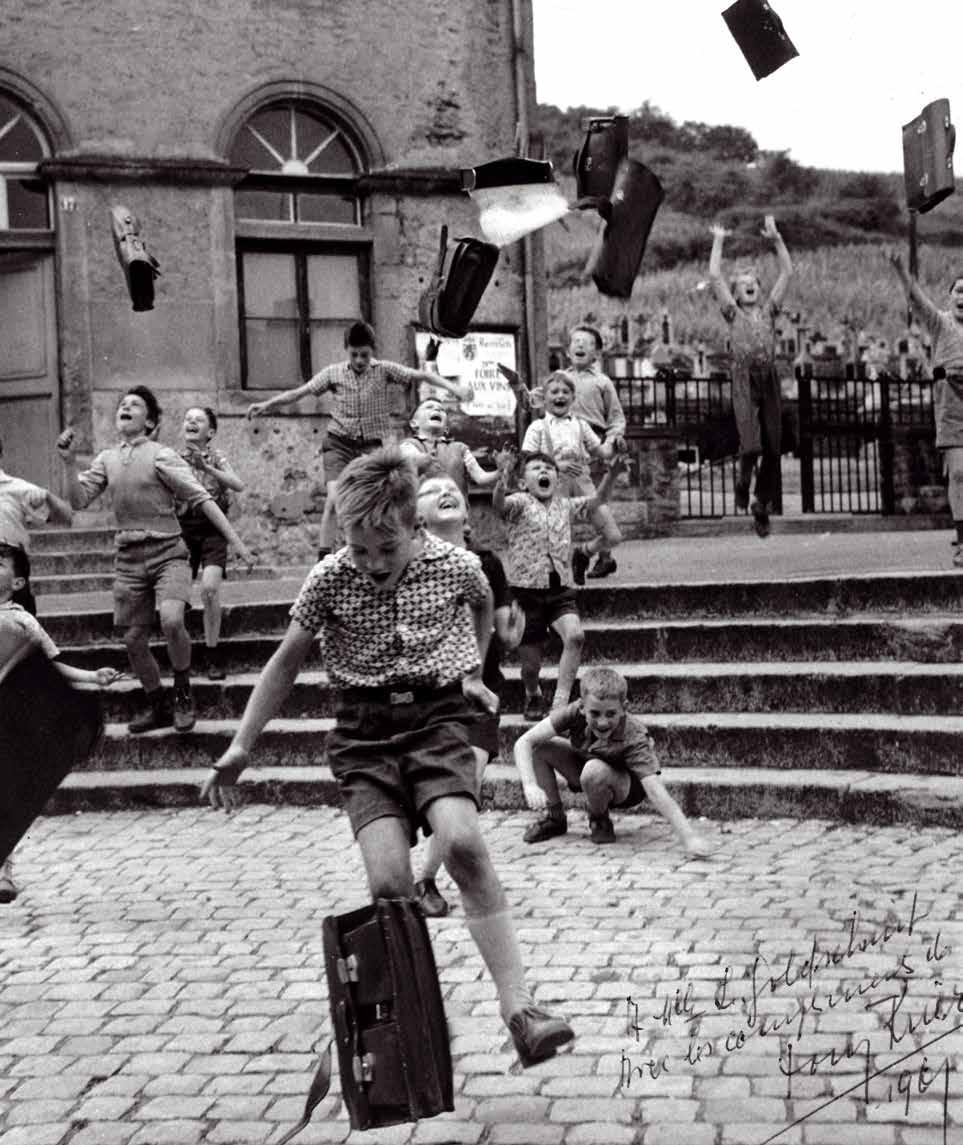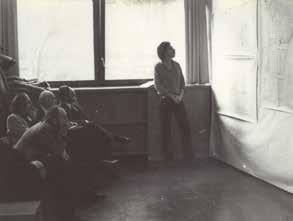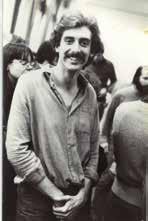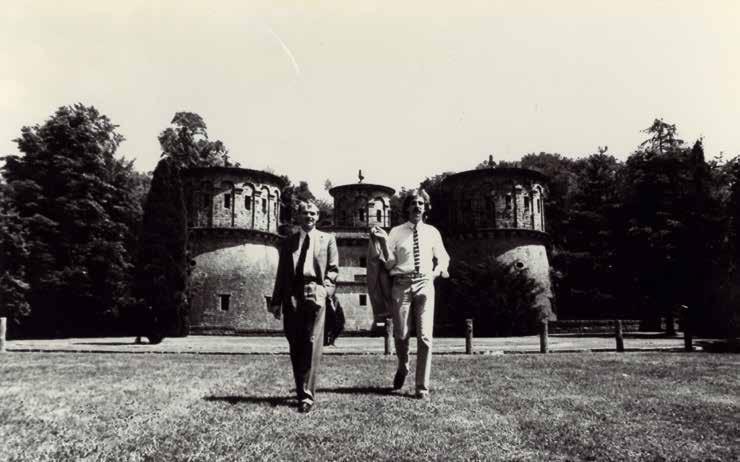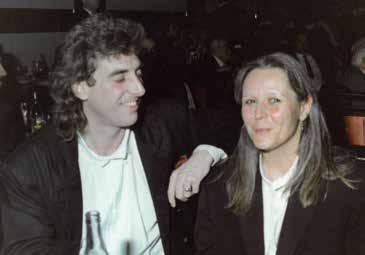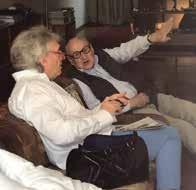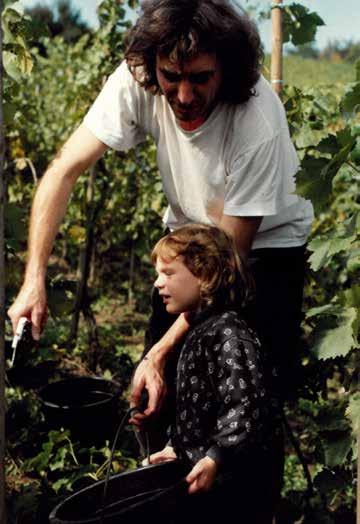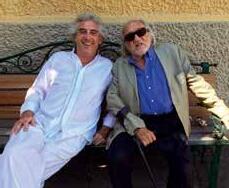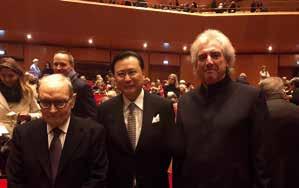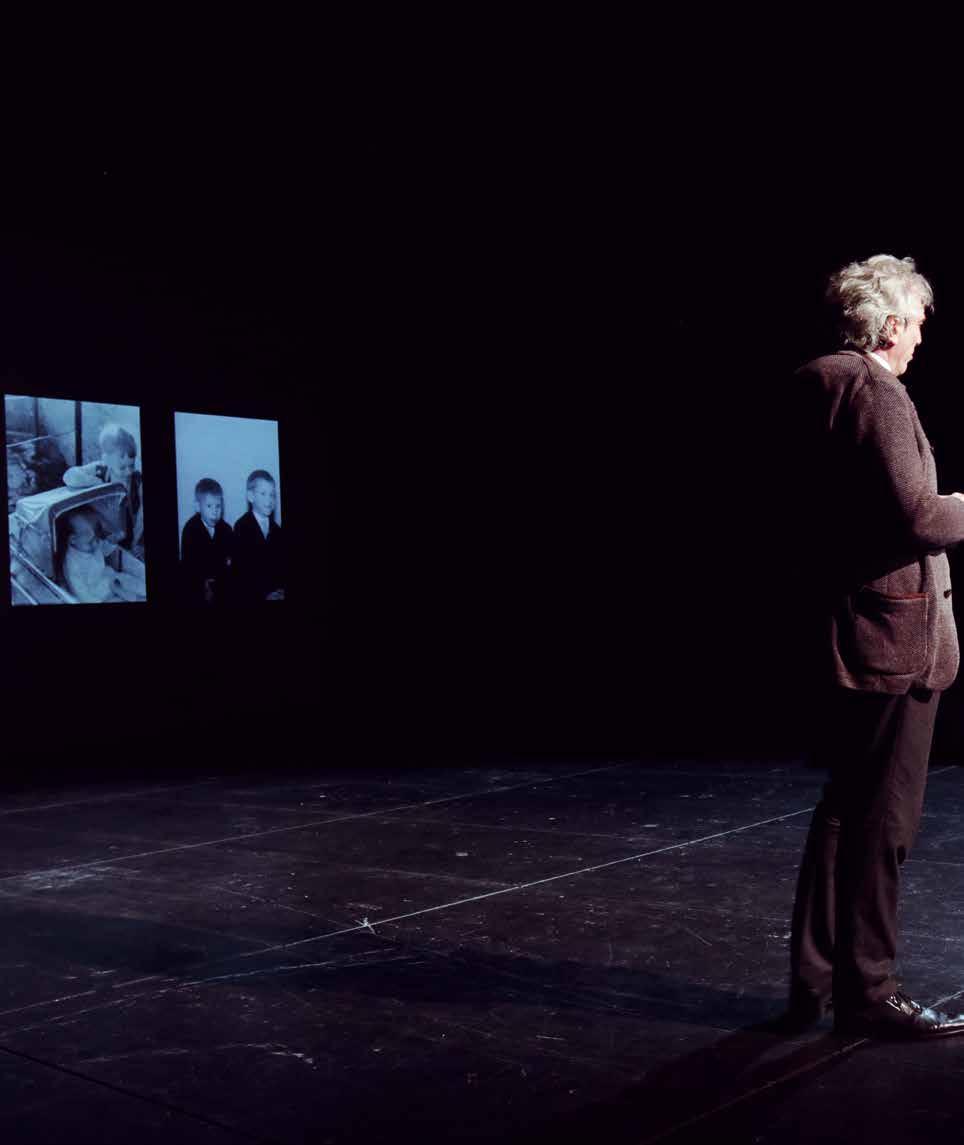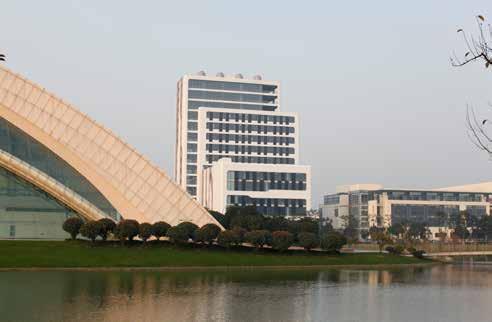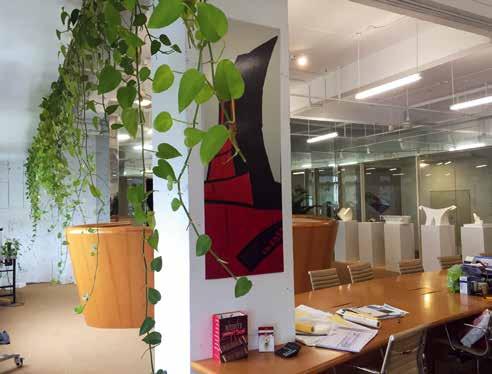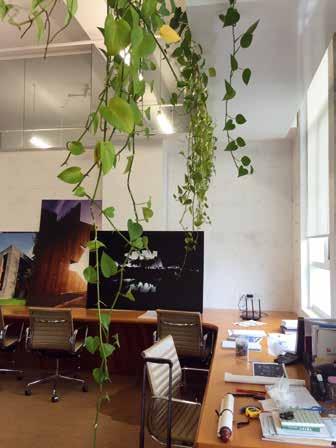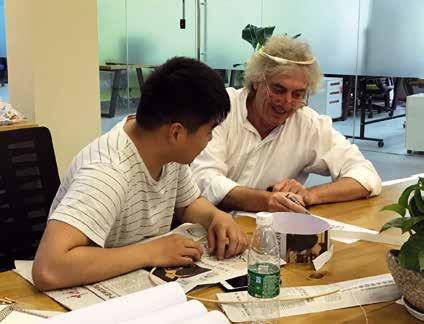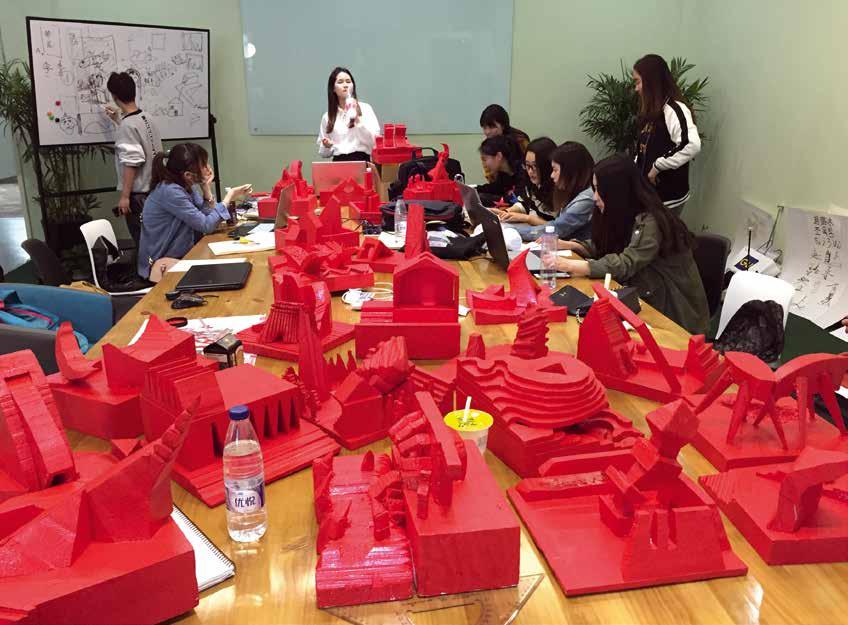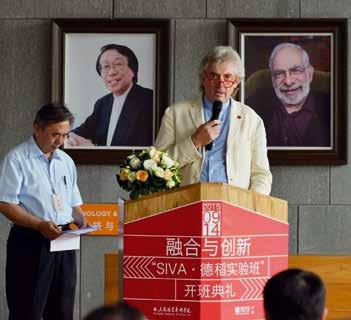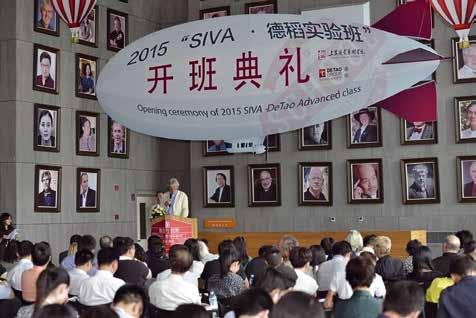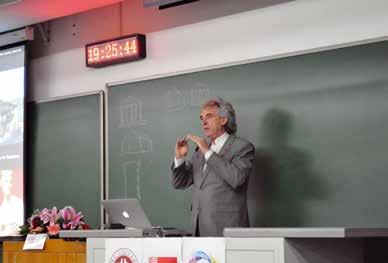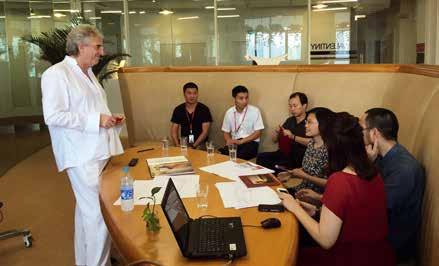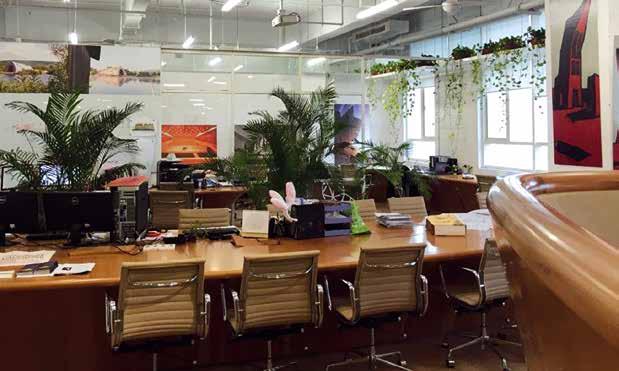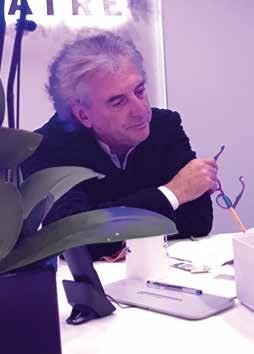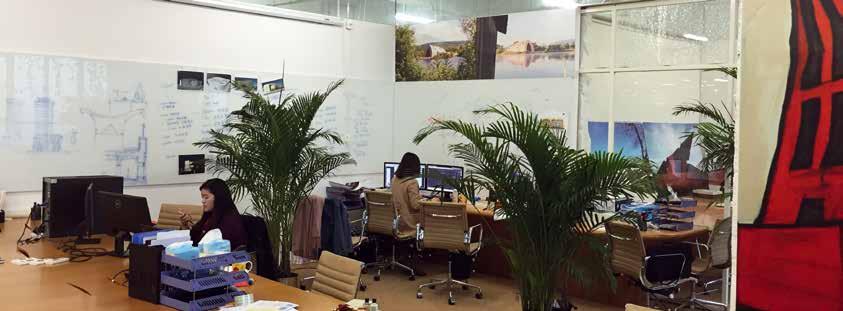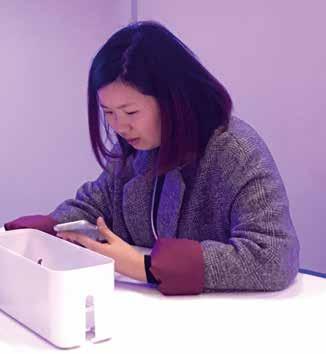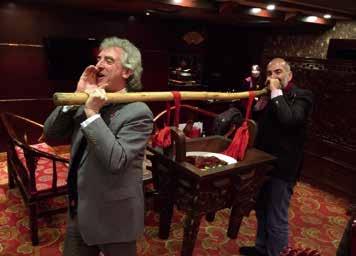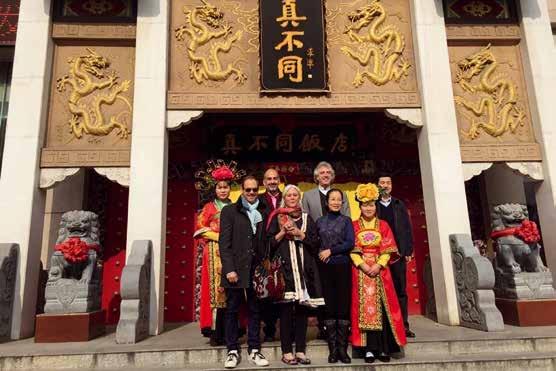François Jean Victor Valentiny FOUNDER
PROF. MAG. ARCH.
1953 Born in Remerschen (LU)
Geboren in Remerschen (LU)
1975–1980 Studied architecture at the Ecole d’Architecture de Nancy (FR) and the University of Applied Arts Vienna (AT)
Architekturstudium an der Ecole d’Architecture de Nancy (FR) und an der Hochschule für angewandte Kunst in Wien (AT)
1980 Completed his studies with the title “Magister architecturae” in the master class of Prof. Holzbauer at the University of Applied Arts Vienna (AT)
Abschluss „Magister architecturae“ in der Meisterklasse von Prof. Holzbauer an der Hochschule für angewandte Kunst in Wien (AT)
1980 Scholarship by the Federal Ministry for Science and Research (AT)
Förderungspreis des Bundesministeriums für Wissenschaft und Forschung (AT)
Since | seit 1980 Partnership with Hubert Hermann, founding of the architectural office Hermann & Valentiny in Luxembourg and Vienna (LU, AT)
Partner von Hubert Hermann, Gründung der architekturbüros Hermann & Valentiny in Luxemburg und Wien (LU, AT)
1980–1981 Assistant at the International Summer Academy in Salzburg (AT)
Assistent an der Internationalen Sommerakademie in Salzburg (AT)
1987–1992 Visiting lecturer at the University of Applied Sciences
Rheinland-Pfalz/Trier, department of Architecture (DE)
Gastdozent an der Fachhochschule des Landes Rheinland-Pfalz/Trier, Abteilung Architektur (DE)
1991 Luxembourg’s first representative at the Venice Architecture Biennale, together with Hubert Hermann (IT) Luxemburgs erster Vertreter bei der Architekturbiennale in Venedig, zusammen mit Hubert Hermann (IT)
1991–1994 Member of the design advisory committee, City of Salzburg (AT)
Mitglied des Gestaltungsbeirates der Stadt Salzburg (AT)
1997 Founding of the company Hermann & Valentiny et Associés SARL (LU, AT)
Gründung der Gesellschaft Hermann & Valentiny et Associés SARL (LU, AT)
1997–2006
2000–2005
2000–2003
Member of the architecture and urban advisory committee, City of Trier (DE)
Mitglied des Architektur- und Städtebaubeirates der Stadt Trier (DE)
Member of the advisory committee, German Architecture Museum Frankfurt (DE)
Mitglied des Beirates des Deutschen Architekturmuseums in Frankfurt (DE)
Substitute professor at the University of Applied Sciences Leipzig (DE)
Vertretungsprofessur an der Hochschule für Technik, Wirtschaft und Kultur in Leipzig (DE)
Since | seit 2002
2003–2007
Founder and publisher of Luxembourg’s first architecture magazine adato (LU)
Gründer und Herausgeber der ersten Luxemburger Architekturzeitschrift adato (LU)
Member of the administration committee of the Fondation de l’Architecture et de l’Ingénierie in Luxembourg
Mitglied des Verwaltungsbeirates der Fondation de l’Architecture et de l’Ingénierie in Luxemburg
2004, 2006 Luxembourg’s commissioner for the Venice Architecture Biennale (IT)
Luxemburger Kommissar für die Architekturbiennale in Venedig (IT)
2006–2007 President of the Fondation de l’Architecture et de l’Ingénierie in Luxembourg
Präsident der Fondation de l‘Architecture et de l’Ingénierie in Luxemburg
2007 Gold Medal of Honor for Services to the Republic of Austria Goldenes Ehrenzeichen für die Verdienste um die Republik Österreich
2007 Luxembourg Architecture Prize for his extraordinary contribution to building culture in Luxembourg Luxemburger Architekturpreis für seinen außergewöhnlichen Beitrag zur Baukultur in Luxemburg
2009 Member of the Academy of Sciences and Arts in Salzburg (AT)
Mitglied der Akademie der Wissenschaften und Künste in Salzburg (AT)
2010 Concept for the Luxembourg pavilion The green heart of Europe for the World Expo in Shanghai (CN) Konzeption des Luxemburger Pavillon The green heart of Europe für die Weltausstellung in Shanghai (CN)
Since | seit
2011 Professor for Community Planning and Green Architectural Design at the DeTao Masters Academy (DTMA) and the Shanghai Institute of Visual Art (CN) Professor für Community Planning und Green Architectural Design an der DeTao Masters Academy (DTMA) und Shanghai Institute of Visual Art (CN)
2011 Foundation of the Festival Música em Trancoso –MeT in Bahia (BR), together with Sabine and Carlo Lovatelli, Dominique and Reinold Geiger Gründung des Festival Música em Trancoso – MeT in Bahia (BR), zusammen mit Sabine und Carlo Lovatelli, Dominique und Reinold Geiger
Since | seit 2014 Foundation of Studio Valentiny hvp architects & partners Shanghai (CN) Gründung von Studio Valentiny hvp architects & partners Shanghai (CN)
2014 Establishment of the Valentiny Foundation (LU) Gründung der Valentiny Foundation (LU)
2016 Opening of the Valentiny Foundation building in Remerschen (LU) Eröffnung des Gebäudes der Valentiny Foundation in Remerschen (LU)
2017 Honorary membership at Obec architektů (Society of Czech Architects) Prague (CZ) Ehrenmitgliedschaft bei Obec architektů (Gesellschaft der tschechischen Architekten) Prag (CZ)
2018 Grand Decoration of Merit from the State of Salzburg (AT) Großes Verdienstzeichen des Landes Salzburg (AT)
2021 Chevalier de l’Ordre Grand-Ducal de la Couronne de Chêne from the Grand Duchy of Luxembourg for his commitment to culture in Luxembourg Ehrung Chevalier de l’Ordre Grand-Ducal de la Couronne de Chêne vom Großherzogtum Luxemburg für seine Verdienste an der Kultur in Luxemburg
FRANÇOIS J. V. VALENTINY
Architect, not architecture
The following talk was held by Francois Valentiny in 2018 at the Berlin edition of the lecture series Architects - not architecture
Der folgende Vortrag wurde 2018 von Francois Valentiny im Rahmen der Berliner Ausgabe der Vortragsreihe Architects - not architecture gehalten.
At first glance, the theme of the Architects, Not Architecture conference series, which has now been in existence for five years, arouses curiosity and multilayered expectations. Naturally, it is not an easy undertaking to voyeuristically reveal one’s innermost being in front of an audience without running
Auf den ersten Blick erweckt das Thema der nun seit fünf Jahren bestehenden Konferenzreihe Architects, Not Architecture Neugierde und vielschichtige Erwartungen. Naturgemäß ist es kein einfaches Unterfangen, sein Innerstes voyeuristisch vor einem Publikum zu offenbaren, ohne dabei Gefahr zu laufen, sein Ego auf eitlen Nebenbahnen zu verirren. Doch interessant ist es allemal, kreative Menschen unterschiedlichster Herkunft zu erleben, wenn sie sich der komplexen Herausforderung stellen, die eigene Person und nicht das eigene Werk zu erklären. Außerdem scheint mir eine allzu große Bescheidenheit sowieso die höchste Form der Eitelkeit zu sein. Nichtsdestotrotz bleibt die Selbstbeschreibung kompliziert, denn auch eine Selbstanalyse, und um eine Solche handelt es sich ja eigentlich im weitesten Sinn, kann nur in hohem Maße subjektiv sein.
Aber es scheint, dass das Publikum gerade an dieser subjektiven Darstellung, die der Mensch hinter dem Werk zeichnet, interessiert sei, offenbart sie doch dessen Ringen, sich neben dem eigenen Produkt einzuordnen. Zudem ist es für den Schaffenden selbst auch ein nostalgischer, wenngleich auch ein sehr lehrhafter Prozess, sich mit dem eigenen Werdegang auseinanderzusetzen, und den Versuch einer Erklärung, oder besser gesagt einer Deutung zu wagen. Am Anfang dieser Übung erscheint mir, dem inmitten der Weinberge geborenen Nachkriegskind, die Klarstellung des Kontextes und der daraus abgeleiteten Atmosphäre meiner Herkunft ungemein wichtig. Objektiv gesehen, wirkt diese sehr kurze Beschreibung durch einen Anfang der 50er Jahre Geborenen natürlich überzogen und nicht ganz richtig. Sie gibt meine Erinnerungen und Wahrnehmungen des damaligen ruralen Milieus im Dreiländereck zu Deutschland und Frankreich wieder.
Das Heranwachsen in einem dörflichen Umfeld mit Handwerkern, Winzern und Bauern war vielschichtig und bunt. Die Normalität dieser Welt bestand darin, dass alles Sichtbare und Fassbare erklärbar und nachvollziehbar war. Für das Unsichtbare und das Unerklärbare gab es die patriarchalischen Dogmen kirchlicher und die weltlichen Autoritäten, die, im Gegensatz zu der heutigen Welt, das Leben oft ungerecht aber oft auch einfacher erschienen
François (left) together with his brother Fernand
the risk of losing one’s ego on vain side tracks. But it is always interesting to experience creative people from different origins when they face the complex challenge of explaining themselves and not their own work. Besides, too great a modesty seems to me to be the highest form of vanity anyway. Nonetheless, self-description remains complicated, because a self-analysis, and this is actually such in the broadest sense, can only be highly subjective.
But it appears that the audience is interested in this subjective representation that the person behind the work draws, as it reveals the struggles to place themselves next to their own product. Moreover, it is also a nostalgic, albeit very instructive process for the creator to deal with his own career and to attempt an explanation, or, better said, an interpretation. At the beginning of this exercise, it seems tremendously important to me, the post-war child born in the middle of the vineyards, to clarify the context of my origins and the atmosphere derived from it. Seen objectively, this very short description by someone born in the early 1950s naturally comes across as exaggerated and not entirely correct. It reflects my memories and perceptions of the rural milieu at that time in the border triangle with Germany and France.
Growing up in a village environment with craftsmen, winegrowers and farmers was multifaceted and colorful. The normality of this world consisted in the fact that everything visible and tangible could be explained and understood. For the invisible and the inexplicable, there were the patriarchal dogmas of ecclesiastical and secular authorities, which, in contrast to today’s world, often
ließen. Auf den Vergleich der Vor- und Nachteile verschiedener Epochen möchte ich mich jetzt nicht einlassen, doch ist es mir ein großes Bedürfnis, auf meine Erfahrungen aus jener Zeit hinzuweisen. Sie erscheinen mir wichtig in meinem Werdegang, denn vielleicht liegt schon in den ganz frühen Jahren die Erklärung, warum ich über Umwege Architekt wurde.
Die rurale, omnipräsente Weinkultur meiner Kindheit mit ihren langsam ablaufenden Aktivitäten und schwerfälligen Wiederholungen prägten nicht nur die Jahreszeiten, sondern sie bestimmten auch die Ordnung und die sozialen Hierarchien. Das ganze Dorfgeschehen drehte sich rund um den Wein. Einer riesigen Operninszenierung gleich, spielten sich alle erdenklichen Parallelgeschichten gleichzeitig ab und wir, die Dorfbewohner, waren freiwillig oder gezwungen gleichsam Protagonisten des Spiels, und dabei die Zuschauer, die Einblicke in die verschiedenen Rollen erlebten. Eine Lebenszeit, in der sich täglich Traum und Wirklichkeit vermischten.
Es war eine glückliche Zeit, die erst bei der Einschulung und durch ein autoritäres Schulsystem, dessen Sinn mir verborgen blieb, gestört wurde. Es folgten Jahre, die von einem Zustand der Angst und der Leere geprägt waren. Vielleicht war es der Versuch aus diesem Leben der Frustration auszubrechen, vielleicht war es ganz einfach nur Langweile die mich dazu antrieb, Figuren und Objekte in der Tischlerei meines Vaters zu schaffen. Wie dem auch sei: das Sägen, Hobeln, Raspeln und Nageln befreiten mich aus der Lethargie und eröffneten mir eine parallele Welt, in der ich meine Fähigkeiten ausbauen und meine Sinne vertiefen konnte. Das Fühlen und Bearbeiten verschiedener Materialien erforderte,
François holding his lecture in Berlin, 2018. In the background, François’ father Prosper.
On top: Fernand and François playing in Wisswee
On the right: The best day of school - a summer in the 50ies
François' father Prosper with Fernand
made life appear unjust, but often also simpler. I do not want to go into comparing the advantages and disadvantages of different epochs now, but I feel a great need to refer to my experiences from that time. They seem important to me in my career, because perhaps the explanation for why I became an architect through detours lies in the very early years.
The rural, omnipresent wine culture of my childhood, with its slowly proceeding activities and cumbersome repetitions, not only shaped the seasons, but also determined order and social hierarchies. Everything in the village revolved around wine. Like a gigantic opera production, all imaginable parallel stories played out simultaneously and we, the villagers, were, voluntarily or forcibly, protagonists of the drama and the audience who experienced insights into the various roles. A time in life when dream and reality intermingled daily. It was a happy time that was only disturbed when I started school and by an authoritarian school system, the sense of which remained ulterior to me. Years marked by a state of fear and emptiness followed.
Maybe it was trying to break out of this life of frustration, maybe it was just boredom that drove me to create figures and objects in my father’s carpentry shop. Be that as it may: sawing, planing, rasping and nailing freed me from lethargy and opened up a parallel world in which I could develop my skills and deepen my senses. Feeling and working with different materials required a lot of patience, skill and imagination, due to a lack of technical knowledge. I learned that sun, cold and rain change the structure, color and smell over time and that everything created has a lifespan.
It was only possible to comprehend time through the smells of the seasons, the times of the week or the times of the day. The freshly stripped fir trunks stood for April, the flowering of lilacs and grape vines for May. The wedding was in autumn, because then the harvest took place. After the grape harvest, the fog came with the smell of burnt potato leaves, and the aroma of the fermentation and the freshly distilled brandy wine wafted throughout the village. Every morning of the year, except on Sundays and public holidays, there was a smell of freshly baked bread and, spread over the days of the week, the burned smell of the shoeing of the horses from the neighbor’s forge mixed with the smell of sawdust and wood shavings from my father’s workshop. On Fridays, when the fish woman went from door to door

mangels handwerklichen Wissens, viel Geduld, Geschicklichkeit und Fantasie. Ich erlernte, dass Sonne, Kälte und Regen über die Zeit die Struktur, die Farbe und den Geruch verändern und dass alles Geschaffene eine Lebensdauer hat.
Das Erfassen der Zeit war alleine durch die Gerüche der Jahreszeiten, der Wochen-oder Tageszeiten möglich. Für den April standen die frisch geschälten Tannenstämme, für den Mai die Blüte des Flieders und der Weinreben. Im Herbst war die Hochzeit, denn dann wurde geerntet. Nach der Weinlese kam mit dem Nebel der Geruch von verbranntem Kartoffel-Laub, und im ganzen Dorf verbreiteten sich der Duft der Weingärung und des frisch gebranntem Brandweins. An jedem Morgen des Jahres, außer an den Sonn- und Feiertagen, duftete es nach frisch gebackenem Brot und über die Wochentage verteilt vermischte sich der Brandgeruch der Behufung der Pferde aus der Schmiede des Nachbarn mit dem Geruch des Sägemehls und der Holzspäne aus der Werkstatt meines Vaters. An den Freitagen, wenn die Fischfrau mit ihrem großen Korbwagen von Haus zu Haus ging, dominierte der Geruch vom Fisch auf den Straßen und im Haus. Nur der Sonntag war ein besonderer Tag, denn dann war es still und es roch ganz einfach nach Natur.
Nach diesen ersten einschneidenden Momenten kam ich als Elfjähriger in ein Internat nach Belgien. Zuerst ein Schock. Ich wurde von einem Moment zum nächsten aus meiner eigenen kleinen Welt herauskatapultiert, und fand mich in einem mir unbekannten und unüberschaubaren Kosmos wieder, wo Menschen unterschiedlichster Kulturkreise und Interessen ein Zusammenleben erlernten. Es war der Beginn einer bis heute andauernden Neugierde.
Die daraus resultierende Rastlosigkeit führte mich über viele Umwege zum Studium an die Hochschule für Angewandte Kunst in Wien, wo ich mit dem Ehrgeiz einer Institution konfrontiert wurde, die sich als Erbe der Wiener Werkstätten verstand. Das Prinzip der Lehre an der Meisterklasse bestand darin, das übernommene Wissen des alten Handwerks an die Studierenden weiterzugeben. Zum ersten Mal seit meiner Kindheit im Dorf erlebte ich wieder eine eingeschworene Gemeinschaft, in der Architekten, Bildhauer, Maler und Kostümbildner zusammenlebten und wo ein Jeder von dem Anderen lernen konnte. Ohne Zweifel hat die Wiener Zeit meinem Leben eine entscheidende Richtung gegeben und darüber hinaus meine Einstellung zur Architektur und zu meinen Arbeiten geprägt.
All images: Study time at the Angewandte in Vienna
with her big wicker basket wagon, the smell of fish dominated the streets and in the house. Only Sunday was a special day, because then it was quiet and it just smelled of nature.
After these first formative moments, I went to a boarding school in Belgium when I was eleven. First a shock. From one moment to the next I was catapulted out of my own little world and found myself in an unknown and unmanageable cosmos, where people from different cultures and interests learned to live together. It was the beginning of a curiosity that continues to this day.
The resulting restlessness led me, via many detours, to study at the University of Applied Arts in Vienna, where I was confronted with the ambition of an institution that saw itself as the heir to the Wiener Werkstätten. The principle of teaching in the master class was to pass on the knowledge of the old craft to the students. For the first time since my childhood in the village, I experienced a tight-knit community in which architects, sculptors, painters and costume designers lived together and where each could learn from one another.
Without a doubt, the time in Vienna gave my life a decisive direction and also shaped my attitude towards architecture and my work.
It took some time until the conglomerate of experience and acquired knowledge became an indispensable pleasure principle and I was able to organize my thoughts and apply them con-
Es hat doch einige Zeit gedauert, bis aus dem Konglomerat von Erfahrungen und Erlerntem ein unverzichtbares Lustprinzip wurde und ich meine Gedanken ordnen und bewusst anwenden konnte.
Das Prinzip, dass ein Gedanke am schnellsten und am präzisesten vom Hirn über die Hand und den Stift direkt auf das Stück Papier visualisiert wird, bleibt mir so unantastbar wie Vitruvius’ Paradigmen über die Architektur. Natürlich sind Funktion und Konstruktion Ausgangspunkt eines jeden Bauwerks, doch wie erschaffe und definiere ich in der heutigen Zeit die Venustas?
Für mich bleibt die Definition der Schönheit an den Einklang aller Parameter gebunden. Verbaute Städte und zerstörte Landschaften stören mein inneres Gleichgewicht, gleichermaßen wie atonale Geräusche und unangenehme Gerüche. Dieses Empfinden ist naturgemäß individuell und nicht endgültig, denn es ist, ähnlich unserem Geschmacksinn, wandelbar. Dazu kommt, dass jeder Kulturkreis und jede Zeit seine eigenen Empfindungen und somit seine eigenen Werte hat.
Die Europäische Kultur basiert auf einer greco-romanischen und jüdisch-christlichen Entwicklung, die über viele Epochen hinweg unsere innere Balance und somit auch die Sicht auf die Architektur und die Landschaft definiert hat. Diese unsere Sichtweise ist nicht einzigartig und nicht wertvoller als jene eines anderen Kulturkreises. Spätestens seit dem International Styl, dessen Auswirkungen sich nicht allein in der Architektur niedergeschlagen und die Ab-
Hubert Hermann and François Valentiny as young architects at Dräi Eechelen Luxembourg-Kirchberg
sciously. The principle that a thought is visualized the fastest and most precisely by the brain using the hand and pen directly onto the piece of paper remains as inviolable to me as Vitruvius’s paradigms about architecture. Of course, function and construction are the starting point of every building, but how do I create and define venustas these days?
For me, the definition of beauty remains bound with the harmony of all parameters. Badly-built cities and destroyed landscapes disturb my inner balance, as do atonal noises and unpleasant smells. Naturally, this perception is individual and not final, because, like our sense of taste, it is changeable. What’s more, every culture and every time has its own feelings and thus its own values.
European culture is based on a Greco-Romanesque and Judeo-Christian development that has defined our inner balance and consequently our view of architecture and landscape over many epochs. This view of ours is neither unique nor more valuable than that of any other culture. Ever since the International Style, the effects of which not only found expression in architecture and blurred the boundaries between the cultures, the emerging globalization of the understanding of beauty has been a fact. Today, the points of view and, in part, the values, have adapted to one another and, as a result of global developments, we are faced with completely different, important questions.
But what I find fascinating about architecture is that beyond our horizons and the epochs, the search for form, scale, material, light, shadow and often the illusion, too, has remained the same.
grenzungen zwischen den Kulturkreisen verwischt hat, ist die angehende Globalisierung des Verständnisses von Schönheit eine Tatsache. Heute haben sich die Betrachtungsweisen und teilweise auch die Werte aneinander angepasst und, bedingt durch die globale Entwicklung, stehen wir heute vor ganz anderen, wichtigen Fragen. Doch faszinierend an der Architektur finde ich, dass über unsere Horizonte und die Epochen hinaus die Suche nach der Form, dem Maßstab, dem Material, dem Licht, dem Schatten, und oft auch der Illusion, die Gleiche geblieben ist.
François and Gustav Peichl François and Wilhelm Holzbauer
From left: Ennio Morricone, George Lee (President of DeTao) and François Valentiny
François and Edith
François and Anna
All images: Studio Valentiny at DeTao Masters Academy, Shanghai (China) where François is teaching since 2011
21 Studio Valentiny at DeTao Masters Academy, Shanghai (China)
François & Sue, Office Manager of Studio Valentiny
François & Fernando Brandao
